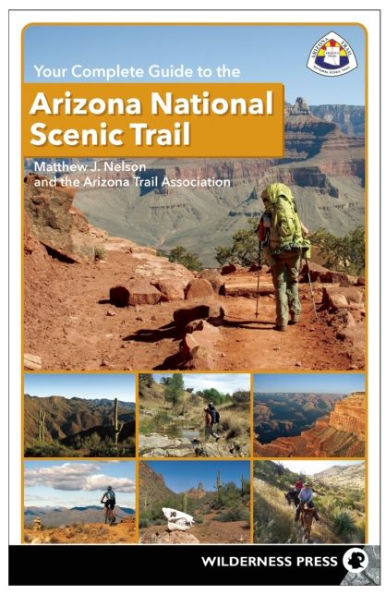Find everything you need to know about the Arizona National Scenic Trail, which beckons hikers, cyclists, and equestrians to its diverse and unforgettable landscapes.
Stretching more than 800 miles from the USA-Mexico border to the Utah state line, the Arizona National Scenic Trail (AZT) passes through a unique blend of desert, forest, and canyon terrain. To hike the best of it—or to backpack the entire route—you want a comprehensive guide assembled by AZT experts. Your Complete Guide to the Arizona National Scenic Trail is widely considered a “bible” of the trail’s twists and turns, its flora and fauna, and its geology.
Written by trail-savvy members of the Arizona Trail Association, including executive director Matthew J. Nelson, this guidebook serves up the 800-mile trail, section by section (43 altogether), so day-hikers and thru-hikers can feel confident about the entire route. Inspired by the magnificence of the scenery, the wildlife, and the diversity of terrain, this book is an irreplaceable source for any hiker, mountain biker, or equestrian. Your Complete Guide to the Arizona National Scenic Trail will fuel your adventures from start to finish.
Inside you’ll find:
- The entire trail divided into 43 sections
- Unique trail features, route details, day-trip options, and difficulty levels for every section
- Guide to resources in 22 welcoming Gateway Communities
- Chart of water sources along the AZT
- Nearly 50 detailed maps that highlight every AZT passage
- Full-color photography that portrays the majesty of this national treasure
Find everything you need to know about the Arizona National Scenic Trail, which beckons hikers, cyclists, and equestrians to its diverse and unforgettable landscapes.
Stretching more than 800 miles from the USA-Mexico border to the Utah state line, the Arizona National Scenic Trail (AZT) passes through a unique blend of desert, forest, and canyon terrain. To hike the best of it—or to backpack the entire route—you want a comprehensive guide assembled by AZT experts. Your Complete Guide to the Arizona National Scenic Trail is widely considered a “bible” of the trail’s twists and turns, its flora and fauna, and its geology.
Written by trail-savvy members of the Arizona Trail Association, including executive director Matthew J. Nelson, this guidebook serves up the 800-mile trail, section by section (43 altogether), so day-hikers and thru-hikers can feel confident about the entire route. Inspired by the magnificence of the scenery, the wildlife, and the diversity of terrain, this book is an irreplaceable source for any hiker, mountain biker, or equestrian. Your Complete Guide to the Arizona National Scenic Trail will fuel your adventures from start to finish.
Inside you’ll find:
- The entire trail divided into 43 sections
- Unique trail features, route details, day-trip options, and difficulty levels for every section
- Guide to resources in 22 welcoming Gateway Communities
- Chart of water sources along the AZT
- Nearly 50 detailed maps that highlight every AZT passage
- Full-color photography that portrays the majesty of this national treasure

Your Complete Guide to the Arizona National Scenic Trail
320
Your Complete Guide to the Arizona National Scenic Trail
320Related collections and offers

Product Details
| ISBN-13: | 9780899977485 |
|---|---|
| Publisher: | Wilderness Press |
| Publication date: | 11/18/2013 |
| Sold by: | Barnes & Noble |
| Format: | eBook |
| Pages: | 320 |
| File size: | 65 MB |
| Note: | This product may take a few minutes to download. |
